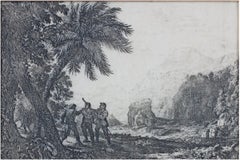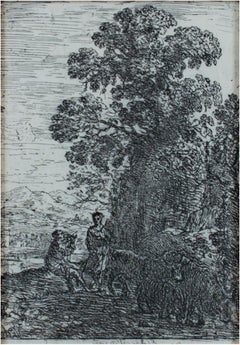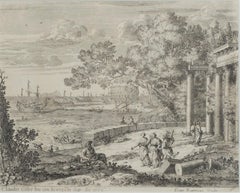David Barnett Gallery
Mid-17th Century Old Masters Landscape Prints
Etching
Mid-17th Century Old Masters Figurative Prints
Etching
Mid-17th Century Old Masters Landscape Prints
Etching
Mid-17th Century Old Masters Landscape Prints
Engraving
Mid-17th Century Old Masters Landscape Prints
Etching
Early 17th Century Old Masters Landscape Prints
Etching
Mid-17th Century Old Masters Landscape Prints
Etching
Mid-17th Century Old Masters Landscape Prints
Etching
17th Century Renaissance Landscape Prints
Etching
Mid-17th Century Old Masters Landscape Prints
Etching
2010s Contemporary Mixed Media
Mixed Media
2010s Realist Animal Paintings
Gesso, Oil, Board
2010s Contemporary Abstract Paintings
Canvas, Acrylic, Cotton Canvas
1880s American Realist Portrait Prints
Etching, Paper
1910s Paintings
Oil
1970s Modern Animal Prints
Lithograph
2010s Abstract Abstract Paintings
Acrylic, Canvas, Cotton Canvas
2010s Abstract Abstract Paintings
Acrylic, Canvas, Cotton Canvas
1950s Contemporary Landscape Photography
Archival Ink, Archival Pigment
1950s Photorealist Landscape Photography
Archival Ink, Archival Pigment
1990s Neo-Expressionist Abstract Drawings and Watercolors
Oil Pastel, Paper, Pastel
Early 2000s Abstract Abstract Drawings and Watercolors
Paper, Watercolor, Laid Paper, Tissue Paper
1950s Contemporary Landscape Photography
Black and White, Archival Ink, Inkjet, Archival Pigment
Early 2000s Contemporary Figurative Paintings
Canvas, Mixed Media, Acrylic
Early 2000s Photorealist Drawings and Watercolor Paintings
Watercolor
Early 2000s Contemporary Figurative Paintings
Jute, Oil
1970s Contemporary Figurative Prints
Ink, Lithograph
Early 2000s Photorealist Landscape Drawings and Watercolors
Watercolor
Early 2000s Photorealist Drawings and Watercolor Paintings
Watercolor
Early 2000s Photorealist Landscape Drawings and Watercolors
Watercolor
Early 2000s Photorealist Drawings and Watercolor Paintings
Watercolor
2010s Photorealist Drawings and Watercolor Paintings
Watercolor
Early 2000s Photorealist Drawings and Watercolor Paintings
Watercolor
Early 2000s Photorealist Drawings and Watercolor Paintings
Watercolor
1980s Impressionist Figurative Paintings
Jute, Oil
Early 1800s Academic Landscape Drawings and Watercolors
Ink, Pen, Pencil
Early 2000s Figurative Paintings
Jute, Oil
Early 2000s Contemporary Portrait Paintings
Canvas, Oil
Early 2000s Contemporary Figurative Paintings
Jute, Oil
1970s Expressionist Prints and Multiples
Lithograph, Paper
1970s American Modern Figurative Prints
Lithograph, Paper
Early 2000s Contemporary Landscape Drawings and Watercolors
Mixed Media, Watercolor
1970s Surrealist Figurative Prints
Lithograph
1890s Academic Figurative Prints
Etching, Paper, Ink, Laid Paper
1970s Contemporary Abstract Prints
Woodcut
1970s Surrealist Figurative Prints
Lithograph
Mid-19th Century Edo Figurative Prints
Woodcut
Mid-19th Century Edo Figurative Prints
Woodcut
Early 2000s Abstract Expressionist Abstract Paintings
Canvas, Oil
1640s Dutch School Figurative Prints
Paper, Etching, Printer's Ink, Drypoint
1970s Surrealist Figurative Prints
Lithograph, Paper
1970s Surrealist Portrait Prints
Lithograph
1920s Art Deco Figurative Prints
Other Medium
1920s Art Deco Figurative Prints
Other Medium
1920s Art Deco Figurative Prints
Other Medium
1920s Art Deco Figurative Prints
Other Medium
1920s Art Deco Figurative Prints
Other Medium
1920s Art Deco Figurative Prints
Other Medium
1920s Art Deco Abstract Prints
Other Medium
1920s Art Deco Figurative Prints
Other Medium





